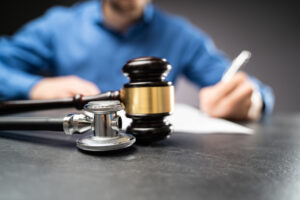
If you’re hurt in an accident, you might hear the word negligence used a lot. In personal injury law, negligence is one of the most important concepts. It refers to someone’s failure to act with reasonable care, which causes harm to another person.
Proving negligence is often the key to winning compensation after an accident. Whether it’s a car accident, slip and fall, or medical mistake, showing that another party was careless can make or break your case.
The Elements of Negligence

To hold someone responsible for negligence, you must prove four key elements. Each part works together to show that someone’s actions—or lack of action—led to your injuries.
1. Duty of Care
The first element is that the defendant owed you a duty of care. This means they had a legal responsibility to act in a certain way to avoid harming others.
For example:
- Drivers must follow traffic laws and drive safely.
- Property owners must keep their premises safe for visitors.
- Doctors must provide medical care that meets professional standards.
These duties are meant to protect others from harm and form the foundation for proving negligence in a personal injury case.
2. Breach of Duty
Next, you need to show that the defendant breached this duty. A breach happens when someone fails to meet the standard of care expected in a given situation.
Some examples include:
- A driver running a red light
- A store owner ignoring a spill that causes a slip and fall
- A doctor making a serious surgical error
These actions show a clear failure to act with the level of care that a reasonable person or professional would use in the same situation.
3. Causation
You must also prove that the breach directly caused your injuries.
This is called causation, and it has two parts:
- Cause in fact: Your injury would not have happened without the defendant’s actions.
- Proximate cause: The harm was a foreseeable result of those actions.
Establishing both cause in fact and proximate cause is essential to show that the defendant’s breach wasn’t just wrongful, but was the direct reason for your harm.
4. Damages
Finally, you need to show that you suffered damages because of the accident.
These include both economic and non-economic damages, such as:
- Medical expenses
- Lost income
- Pain and suffering
- Property damage
Without damages, even if someone was careless, there is no claim.
Understanding these four elements helps you see how a personal injury case is built and what evidence is needed to succeed.
Types of Negligence
Negligence can take different forms depending on the situation and the state laws that apply.
Comparative Negligence
In some cases, more than one person shares responsibility for an accident. Under comparative negligence, each party’s fault is determined as a percentage. Your compensation is then reduced by your share of the fault.
For example, if you’re found to be 20% at fault in a car accident, your final compensation would be reduced by 20%.
Contributory Negligence
In a few states, if you’re found to have contributed to the accident in any way—even just 1%—you may be barred from recovering compensation entirely. This is known as contributory negligence and is much harsher on injured parties.
Gross Negligence
Gross negligence involves a much higher level of carelessness. It refers to actions that show a reckless disregard for the safety of others. In some cases, gross negligence can lead to punitive damages, which are meant to punish the wrongdoer and deter similar conduct.
How Evidence Helps Prove Negligence
Building a strong negligence case requires solid evidence.
Common types of evidence include:
- Police or accident reports
- Photos and videos of the scene
- Medical records
- Witness statements
- Expert testimony
Gathering this evidence early can strengthen your claim and make negotiations with insurance companies more effective.
Working with a personal injury lawyer can help ensure that crucial evidence is collected and preserved, giving you a better chance of a successful outcome.
How a Lawyer Can Help with Negligence Cases
An experienced personal injury attorney knows how to identify and prove negligence in a wide range of cases. They can investigate the incident, gather evidence, negotiate with insurers, and represent you in court if necessary.
Having legal support can also make it easier to understand your options and focus on recovery instead of paperwork and negotiations.
Contact Apex Law Firm, PLLC for a Free Consultation
Negligence is the foundation of most personal injury claims. Understanding what it means—and how to prove it—is essential to securing fair compensation. If you’ve been injured because of someone else’s careless actions, you shouldn’t have to face the aftermath alone.
Contact us today at Apex Law Firm, PLLC to learn more about your rights. Our team can evaluate your case, explain your options, and help you hold the responsible party accountable.
We proudly serve Hillsborough County, Pinellas County, Pasco County, Polk County, and its surrounding areas in Florida:
Apex Law Firm - Tampa Office
412 E Madison St Suite 1206, Tampa, FL 33602
(813) 444-5212

